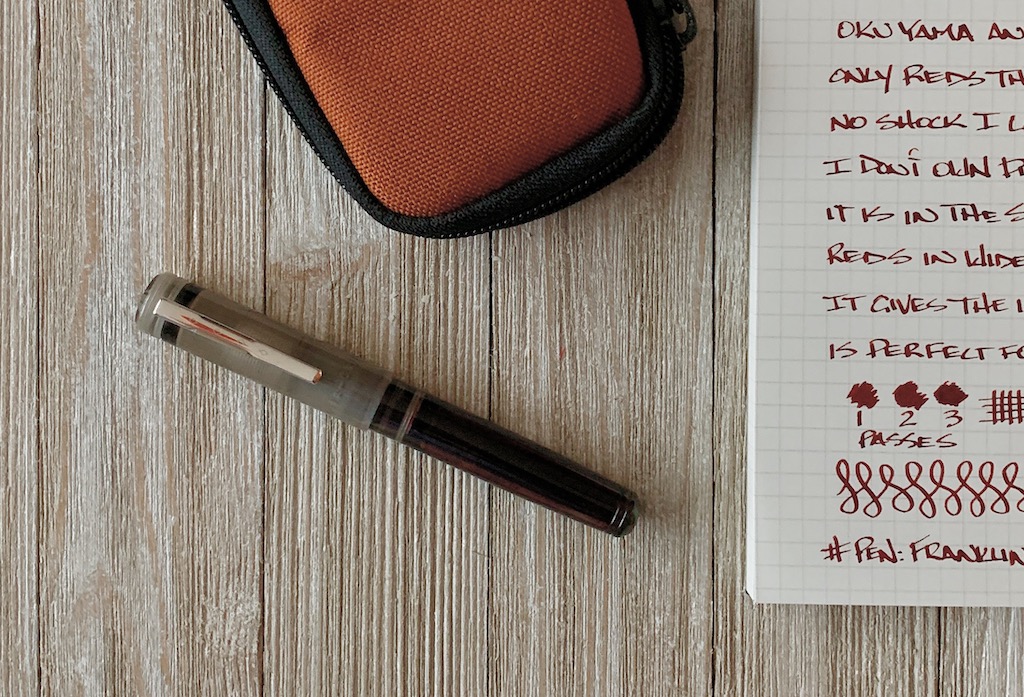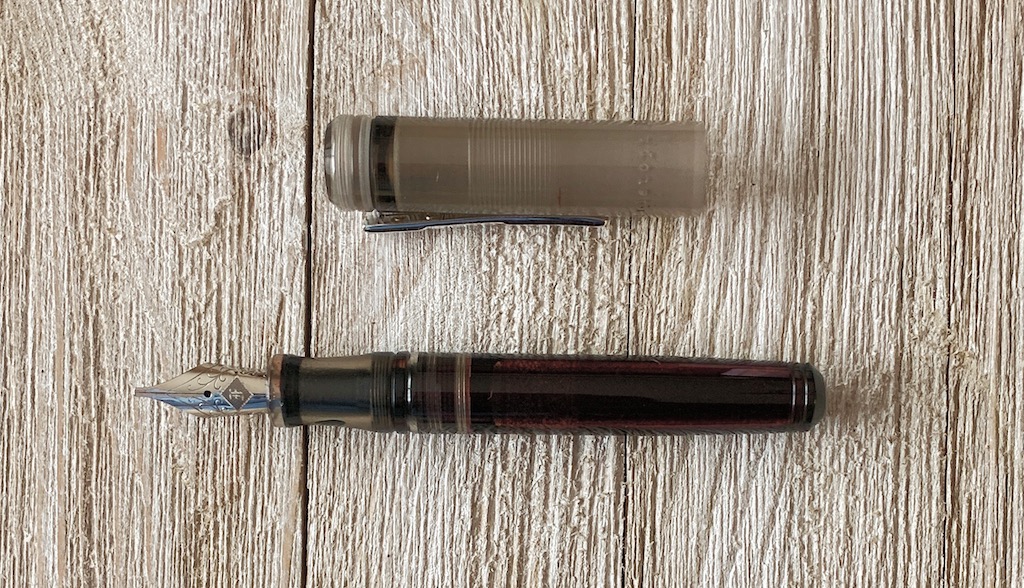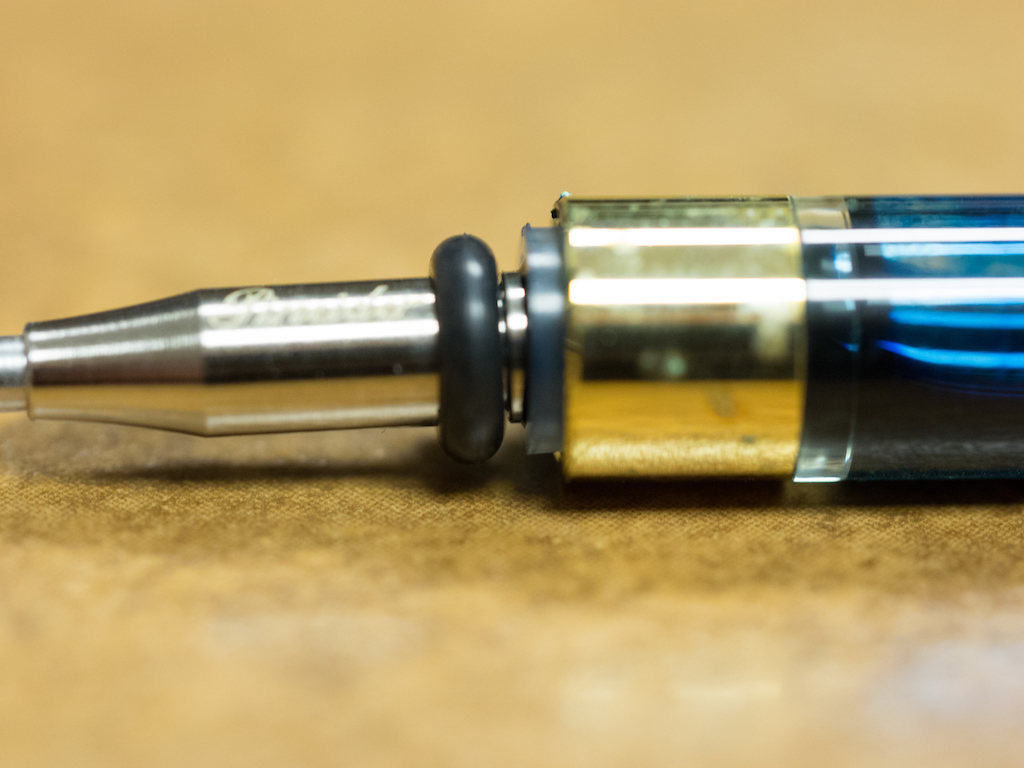(Susan M. Pigott is a fountain pen collector, pen and paperholic, photographer, and professor. You can find more from Susan on her blog Scribalishess.)
The TWSBI Eco T is a pen made especially for beginners--whether those beginners are new fountain pen enthusiasts or children who want to emulate their fountain pen addicted parents. The grip of the Eco T has a rounded triangular shape to assist beginners with proper finger placement. It is a very comfortable grip (much more comfortable than the Lamy Safari), and even experienced pen users will enjoy a grip that helps them position their fingers properly.
You can see the shape of the grip here
The Eco T is a transparent demonstrator. It has a stainless steel clip and cap ring. The cap ring is engraved with the words “TWSBI Eco T Taiwan.”
The cap finial is red with a raised TWSBI logo. You’ll notice that the cap has the same triangular shape as the grip.
Inside the cap is a plastic sleeve that keeps the nib from drying out.
The Eco T is a piston filler, so it is very user friendly. It pulls in a good amount of ink (1.5ml), and the ink is easy to see in the demonstrator body.
You can post the cap by pushing it over the rubber O-ring near the piston. I find posting makes the pen unbalanced, however.
The pen is a medium size (5.5 inches/139.7mm capped; 5.2 inches/132mm uncapped; and 6.3 inches/160mm posted) and should be comfortable for most users. The body weighs only 12 grams without ink.
I thought my pen came with a medium nib because the model number on the box started with an “M.” But I quickly realized that it’s actually a 1.1 mm stainless steel stub. It writes very smoothly and with generous ink flow. I had no difficulties with hard starts, skipping, or scratchiness. In fact, I am impressed with how beautifully this pen writes. The stub nib gives the lines character and a bit of shading (with the right kind of ink, of course).
One cool thing about TWSBI pens is that you can completely disassemble them for a thorough cleaning. Included in the box is a special wrench to unscrew the piston and silicone grease to lube it.
In addition, you can remove the nib unit to clean out the ink that collects in the grip area.
I’ll be honest. When I realized that the Eco T was a “beginner’s pen” I thought I would be disappointed with it and find it “toy-like.” I was wrong. This is one of the most comfortable TWSBI pens I’ve used. The triangular grip keeps my fingers in an ideal position for writing, and the 1.1mm nib is fantastic.
The ink used in this review is Kyo-no-oto Adzukiro
I highly recommend the TWSBI Eco T whether you’re just beginning to use fountain pens or you’re a pro user. The price point is really great for a piston-filling demonstrator. You can purchase a TWSBI Eco T from JetPens for $31.50 in EF, F, M, B, and 1.1mm Stub.
(JetPens provided this product at no charge to The Pen Addict for review purposes.)
Enjoy reading The Pen Addict? Then consider becoming a member to receive additional weekly content, giveaways, and discounts in The Pen Addict shop. Plus, you support me and the site directly, for which I am very grateful.
Membership starts at just $5/month, with a discounted annual option available. To find out more about membership click here and join us!









































